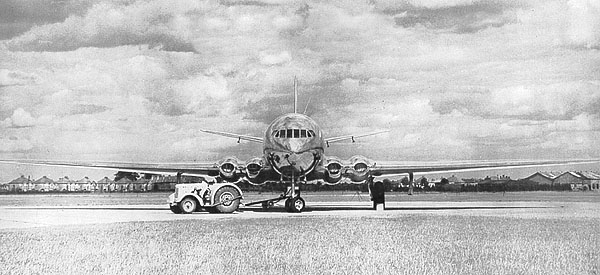
Comet 1
Detailed design began in November 1946, lead by de Havilland's chief designer, Rod Bishop. No aircraft had carried so much so fast and so far. A belly load of bombs was one thing, or hardened crew in thermals and oxygen masks, but the Comet had to carry fare-paying passengers as high and as fast as a military jet, but in superlative luxury. There was no precedent: the sheer breadth of achievement is staggering.
Early jet engines were not powerful, therefore the Comet had to be light with extremely low drag. A great deal of work was done in the wind-tunnel: engines were incorporated into the wing, while the wings themselves were extremely thin.
De Havilland had long experience with structural adhesives. "Redux", invented by the Aero Research Company in Duxford in 1943, was used extensively on the Comet. Stringers were not riveted to the wing skins but bonded using Redux, heat and pressure, resulting in lighter, stiffer assemblies and reducing localised stress. A new production facility was built on the site of the old Vickers Wellington factory in Chester, with a roof structure boasting "A million square feet under a single span!" — it's where Airbus wings are made today.
At 40,000 ft, the outside temperature is -55°C and the pressure is one fifth of normal atmosphere. To maintain comfortable conditions inside, the pressure differential had to be twice as high as the previous generation of airliners. This, and rapid rates of climb, required sophisticated atmospheric control. The solution was to bleed fresh air at high pressure from the engine compressor stage and blend it with hot air from the turbine, via a system of heat exchangers, humidifiers, regulators and silencers. Pressurisation, new aluminium alloys, powered hydraulics, anti-lock brakes, fuel and refuelling equipment are just some of the innovations that had to be developed by de Havilland and their technical partners for the World's first jet airliner. What's even more extraordinary is that this totally new type of aircraft was delivered on time and within budget.
